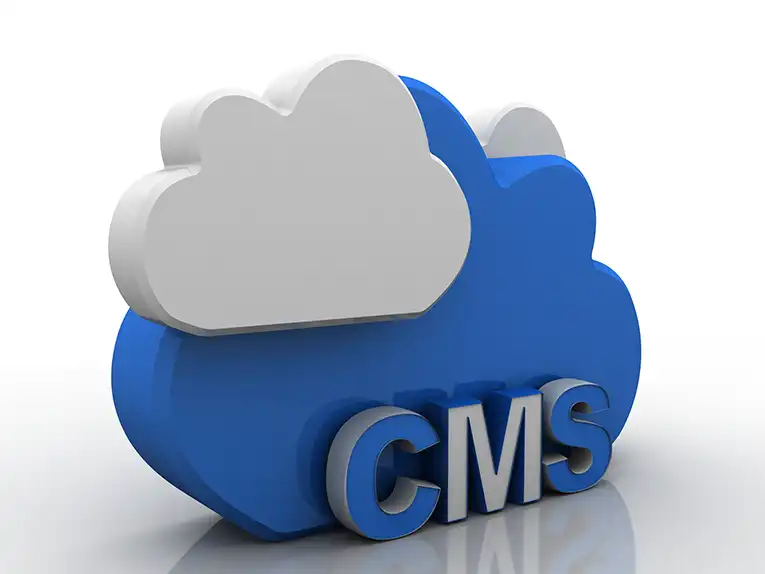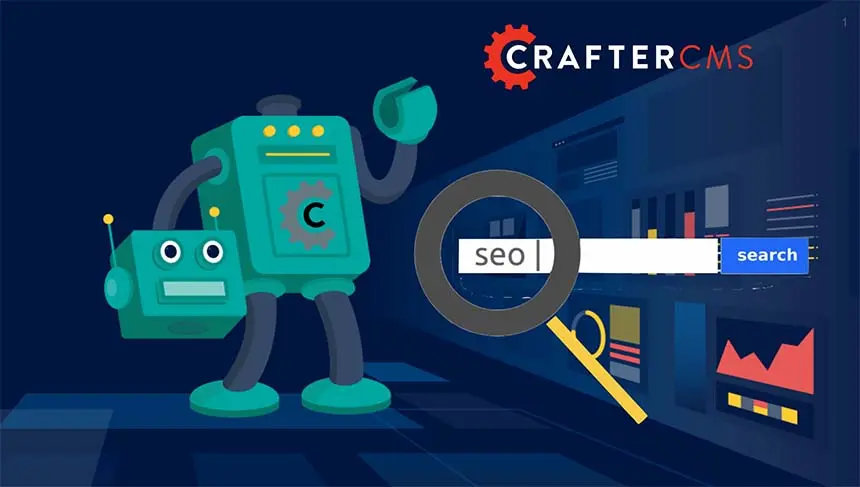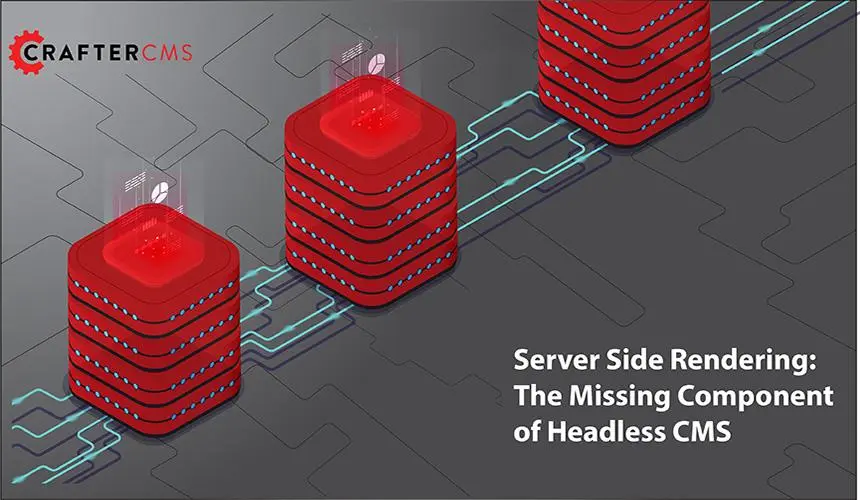Building Dynamic Sites With a Git-based CMS: Secure, Fast, and Personalized

Amanda Jones

As the debate between static and dynamic sites continues, most companies feel that the choice is one or the other. It’s possible, however, to combine some of the best features of both dynamic and static sites for secure, fast, and personalized websites — with the right Git-based CMS.
With this in mind, let’s look at the benefits of Git-based sites, the main drawbacks of most Git CMS solutions, and where CrafterCMS fits into the mix.
The Benefits of Git-based Sites
There are a number of benefits of static Git-based sites ranging from simplicity to better performance and improved security. These advantages accrue if you are using a static site generator (SSG) such as Jekyll, or using a simple headless CMS along with a SSG such as Gatsby.
Simplicity
Git-based and flat-file solutions are easier for IT teams to set up and maintain. There’s no database, for example, that needs to be managed or replicated between different environments from development to production. Instead, Git-based CMSs store content in a simple structure of files and folder that’s straightforward to maintain with version control features. Launching a new site is as simple as pushing these files to the production server.
Leveraging Git has many other benefits for content management such as keeping a history of the site, branching into multiple versions of the site simultaneously, and integrating with DevOps. Git-based CMSs are ready for CI/CD and other automation processes by default.
Performance
With no database and pre-rendered static files, Git-based websites can deliver content fast. Retrieving information from a database is slow and can use up substantial computing resources. In addition, as a website grows traditional databases are prone to becoming bottlenecks. SQL databases lack scalability because they’re hard to replicate and keep in sync across environments. These factors have a dramatic impact on SEO and the overall user experience. But the performance benefits also extend to elasticity because Git-based sites don’t have the expensive risk of overprovisioning databases.
In addition, static files are also much easier to cache than database-driven solutions. Many Git-based CMSs leverage content delivery networks (CDN) or object storage in the cloud with services like Amazon S3. These solutions improve site performance by making it straightforward to deliver web content globally at the edge where users are.
Security
Git-based sites are more secure because databases are often exploited by hackers. When database calls are made, if developers haven’t set up proper input validation then there’s a chance that malicious users can use SQL injection to steal or tamper with data. Git-based repositories don’t take live input from users and are tracked by the version control system, so these sites are less vulnerable to attacks.
Static sites, especially those with very little JavaScript, also have less risk of code injection, cross-site scripting (XSS), and many other common vulnerabilities. That’s because there are fewer requests to the backend server and database with static websites. Each additional request is another opportunity for hackers, so Git-based static websites reduce data exposure.
Where Most Git-Based CMS Solutions Fail
From a developer standpoint, Git-based software solutions are ideal. They’re fast, secure, and scalable. For marketers and other content authoring teams, however, the majority of Git-based CMSs lack the features they need to deliver great digital experiences such as robust authoring tools, personalization, and other dynamic features and capabilities. That’s because most Git-based CMS solutions only deliver static sites.
Not Marketer Friendly
There’s no question that most Git-based CMSs are developer-centric. Developers are familiar with Git and it’s straightforward for them to work with, but this leaves marketers with little control over content creation. They don’t have the tools marketing teams need to build innovative digital experiences.
Since many Git-based solutions cater to developers, there are poor user interfaces for creating and editing websites for less-technical staff. That means more back and forth between development and marketing teams to launch websites and keep them up to date. Developers shouldn’t need to be involved in the publishing process, and marketers shouldn’t need to know about Git to manage content effectively. Many Git-based CMSs, however, are not fully decoupled.
No Dynamic Capabilities
While website performance is critical for capturing the customer’s attention, without interesting and relevant content they’re not likely to stay for long. That’s why marketing teams have increasingly turned to dynamic sites with rich personalization features.
Most Git-based CMSs, however, lack the capability to dynamically deliver personalized content. That’s because static websites are pre-rendered and generally deliver the same content for each visitor. Changes to the site usually only occur when content in the CMS is updated and the site is rebuilt. This limits the digital experiences that marketing teams can deliver.
How CrafterCMS Supports Static and Dynamic Sites
Ideally, the CMS you use should be flexible to support any type of website from static to dynamic and everything in between. So that’s why we built CrafterCMS -- the first Git-based CMS that supports both static and dynamic sites.
Crafter takes the performance, security and scalability benefits of a Git-based website, and not only allows you to publish static sites directly, but also provides an enhanced authoring experience, personalization capabilities, and a full-range of developer and content author options for creating dynamic sites.
With Crafter Studio, marketing teams have the tools they need to create, manage, and publish content. Beyond this, marketers can preview and edit websites in-context using a powerful WYSIWYG editor with drag-and-drop tools. Having an easy-to-use and intuitive interface is crucial for content marketing teams. These tools work regardless of the development framework or deployment model your team chooses.
For example, if you want to build a static site that is built with ReactJS and is pre-rendered with the Gatsby SSG platform and then publish the output to S3 and Cloudfront CDN, no problem. Or if you are building a fully dynamic portal based on AngularJS that personalizes every request based on the user’s profile, activities and preferences that’s no problem either.
Crafter Studio’s authoring tools enable your development team to build and innovate using any front-end technology they want while providing authors with the in-context editing they prefer. Furthermore, CrafterCMS’ decoupled and headless+ CMS capabilities are flexible enough to support nearly any deployment model. Along with giving authors control over content, Crafter empowers content authoring teams to create highly personalized digital experiences, and other dynamic features. Pages and content can be targeted to specific audience segments with ease. That means marketers can deliver markup that’s dynamic as well. Most Git-based CMSs, or a headless CMS paired with an SSG, aren’t capable of matching these features.
With CrafterCMS, you can leverage the underlying Git repository to support a full DevContentOps™ process. This brings speed, security, and digital adaptability to your organization. In addition, Crafter has rich authoring and personalization capabilities for highly dynamic digital experiences. Marketers don’t even need to know that they’re benefiting from the power of Git, but the technology will certainly enhance the developer and operations experience. This is in line with Crafter’s commitment to building a CMS that’s ideal for all stakeholders from marketers to developers to IT operations and devops teams.
Related Posts

Building Personalized Digital Experiences for a Cruise Liner

Sara Williams

CrafterCMS Wins More G2 Awards Spring 2024

Amanda Lee

What Is a Cloud CMS? (Unlocking the Benefits of a CMS in the Cloud)

Sara Williams

Headless CMS SEO (How to Do SEO Right With a Headless CMS)

Amanda Jones










